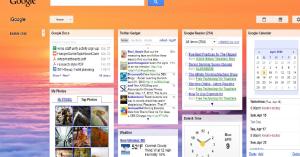In this post I want to explore Wikis in Education. Wikis provide another way for teachers and students to use social media. It is a way for a group of people to work collaboratively online and organize information as if it is a website. Some of the benefits to wikis include the ability to allow certain people to edit and certain people to view. You can upload documents, images, and include hyperlinks. You can also see a history of all the changes that were made to the wiki. Wikis would be a great way for students to work collaboratively on a project, especially if they weren’t in the same class. They can have discussions as well as make edits to each others work. Here is a great link for a video on how wikis work
http://www.commoncraft.com/video/wikis
Here are some wikis that I found helpful.
Webtools4u2use (http://webtools4u2use.wikispaces.com/–Wikis+to+Share)- This wiki is geared towards media specialists and has some great ideas including:
-
using wikis for bookclubs and a hub to post everything
- a lot of technology tools
- links to other great wiki
I particularly found the idea of a book discussion through a wiki as an interesting concept. I think it could be great because you could post background information, discuss questions, and you can do it without having to worry about students not wanting to give up their lunch time. It also could allow you to continue book clubs over the summer.
Library Media Specialist 2.0 (http://eduscapes.com/sessions/slms2/) – This wiki is also geared to Media Specialist and looks as if it was set up for a workshop. It has some great resources as well, including samples of student projects, links to technologies teachers and student can use, and some interactive sites. I enjoyed playing the Lord of the Flies game. This would be a great resource for someone starting out with wikis and social learning.
ResourceforHistoryTeachers (http://resourcesforhistoryteachers.wikispaces.com/) – This wiki I fell in love with. It is full of resource for history teachers(thus the name:)). I found some excellent resources on this wiki, including a webquest where students had to figure out what skills were needed to live in the Paleolithic age. It is set up by subject and then objectives. When you click on the objective it comes to a wealth of resources to help meet the objective. This wiki was also an award winner for 2011.
This last wiki may become a new favorite source of information for lessons for me. This site also made me realize just how great wikis could be used to gather information for future teachers. My school currently has some teachers that teach split grade levels that move around year to year. If we kept all of our resources in a central location like this it would make it so much easier for the teachers that have to change curriculum often. What a great way to share and collaborate.
citations:
Library Media Specialist 2.0. (n.d.). : Social, Collaborative, and Interactive Technologies. Retrieved April 28, 2012, from http://eduscapes.com/sessions/slms2/
Resourcesforhistoryteachers. (n.d.). Retrieved April 28, 2012, from http://resourcesforhistoryteachers.wikispaces.com/
Wikis to Share. (n.d.). Webtools4u2use. Retrieved April 28, 2012, from http://webtools4u2use.wikispaces.com–Wikis+to+Share



